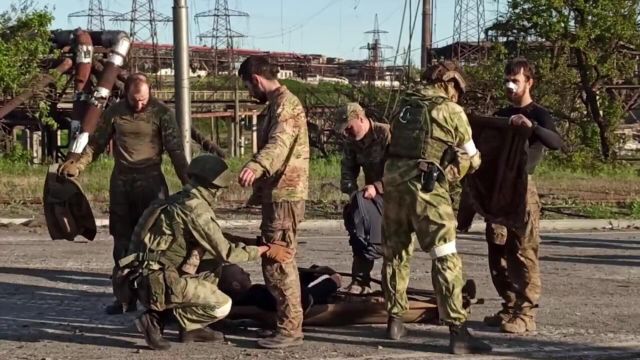MARIUPOL, May 17 — RIA Novosti, Andrey Kotz.Ukrainian security forces, blocked at the Azovstal metallurgical plant in Mariupol, decided to surrender. They held this powerful fortified area for almost three months. By mid-May, the situation had turned from severe to critical: food, water and medicines had run out, and the number of wounded exceeded six hundred. About how the first group with a white flag came out of the catacombs — in the RIA Novosti report.
Danger of provocations
Negotiators from the Russian side arrived in Mariupol by 17:00. The gathering place is the Vostochny microdistrict, Merzlyaka Street. The road is blocked by two army "Tigers", then only the official delegation is allowed to pass. Journalists are left waiting at an improvised checkpoint.
Ten buses were sent to "Azovstal" — five sanitary paziks for bedridden prisoners and five icaruses for those who still retained the ability to move independently.
According to the latest information, 2,026 people are sheltering at the plant, 400 of them are wounded, 55 are serious. Eight hundred residents of Azov, the rest are the National Guard and soldiers from different brigades of the Armed Forces of Ukraine. This is a pretty serious military force. No one is going to take their command at their word, so several hundred special forces soldiers of the Russian Guard are in full combat readiness. In case the Mariupol garrison suddenly decides not to act according to the scenario.
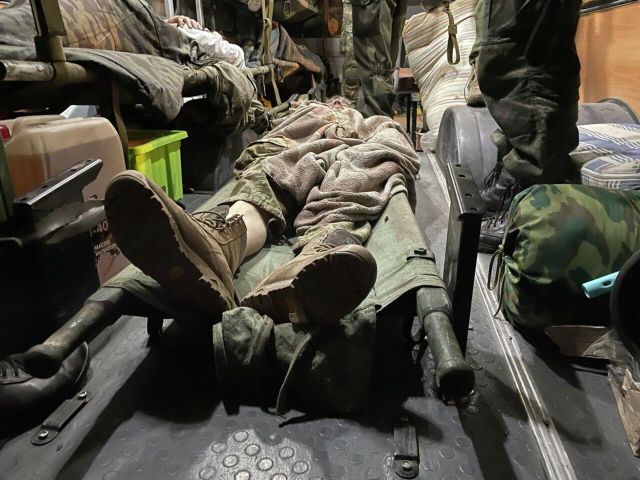
Ukrainian serviceman on the bus
Image source: © RIA Novosti / Andrey Kotz
"I've been chasing bandits through the mountains of the North Caucasus for 16 years, but the Ukrainian military surprised even me," says a short, lean special forces soldier Denis. "They will give odds even to the most hardened terrorists. They hide behind a "peaceful man", torture prisoners. I think when they give up, they need to be treated, fed. And then judge — and life sentence, like Nurpashi Kulaev, the only militant who survived in Beslan."
Rosgvardeytsy strongly recommend that journalists do not take off their bulletproof vests. You should expect any meanness from the Azov people. For example, a mortar crew may be hiding nearby, and a spotter may be sitting in the attic of one of the broken skyscrapers. And when buses with prisoners move out of the city, they will be hit: despite the populist statements of President Zelensky that "Ukraine needs living heroes," having talked during interrogations, they are able to seriously tarnish the reputation of Kiev in the eyes of their own people and Western allies.
"We will not mock"
A convoy of buses accompanied by armored cars and police cars leaves Mariupol after dark, around 22:00. On the first day, 265 people surrendered, 51 of them wounded. The convoy is divided into two parts. Ikarus turn to Elenovka — there is an improvised camp for prisoners.
The Paziki are sent to Novoazovsk, where the wounded should be examined, fed, and the most severe ones should be operated on. We follow. An hour later, the buses park in the courtyard of the local district hospital. I go into one of them. The sharp smell of long-unwashed bodies and rotting wounds hits the nose. Ukrainian soldiers are lying on stretchers in three tiers. They look pathetic: thin, pale, dirty, lousy, wrapped in dirty bandages. Her eyes were frozen with fright.
Those who are closer to the exit are cautiously watching through the open doors for the soldiers of the DPR army guarding the hospital. However, no one is going to mock the prisoners — on the contrary, they share water with them.
"They laid down their weapons, they are wounded, they are no longer dangerous," explains a fighter of the 107th regiment with the call sign Yary. — Unlike them, we do not shoot the knees of prisoners and we do not castrate the wounded. I treat everyone without hatred. This is a serious opponent, whom the entire Western world has been arming and training to fight for eight years. Technically, they are equipped perfectly. We should have beaten them back in 2014, everything would have turned out differently."
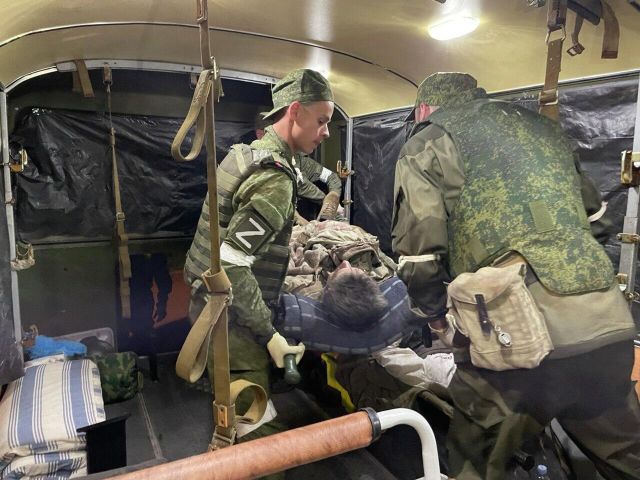
Soldiers of the DPR army carry the wounded man to the bus
Image source: © RIA Novosti / Andrey Kotz
Mercy of the Winners
Doctors enter the buses and interrogate the prisoners about the nature of the wounds. Mainly mine-explosive and fragmentation injuries of the limbs. There are two amputees: one leg was torn off under the groin, the second — just below the knee. The AFU fighter with burns looks the worst of all. "I got hit by flamethrowers," he tells surgeons.
People in camouflage appear behind the medics. They have other questions: first and last names, call signs, ranks, names of commanders, places of service. They communicate correctly, without pressure. But they casually ask: "Have you witnessed torture? Has anyone been raped at Azovstal? Were you given an order to shoot at civilians? Who ordered the defense in residential buildings?"
The soldiers of the 107th regiment take off their bulletproof vests, lean machine guns against the wall and begin to carry the wounded out of buses. They are lifted to the second floor, placed in free beds. There are not enough seats, so the last stretcher is put on the floor. All are examined by doctors again, some are injected with painkillers.
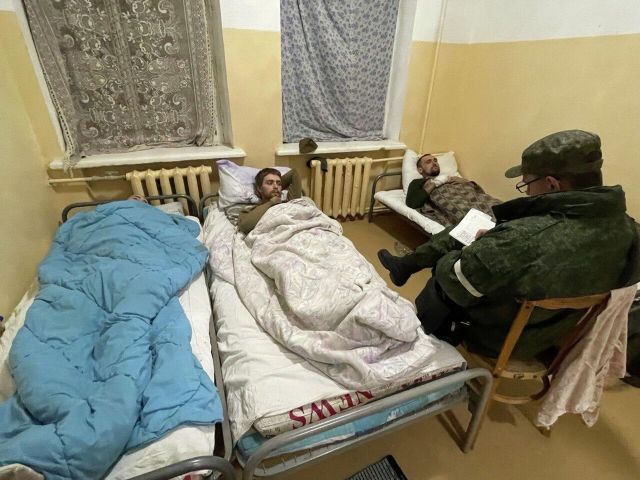
Ukrainian servicemen in the hospital in Novoazovsk
Image source: © RIA Novosti / Andrey Kotz
Having got into the light heated chambers after the dark dungeons of Azovstal, the prisoners noticeably calm down. They are given dinner, tea with cookies and condensed milk. A young nurse, walking down the corridor, bends down to one of the wounded and adjusts the blanket at her feet.
In the morning, many of them will be taken to other hospitals. Taking advantage of a short respite, the exhausted Donetsk fighters from the escort group fall asleep right on the floor in the corridor. Their war, unlike the prisoners of Azov, has not yet ended.
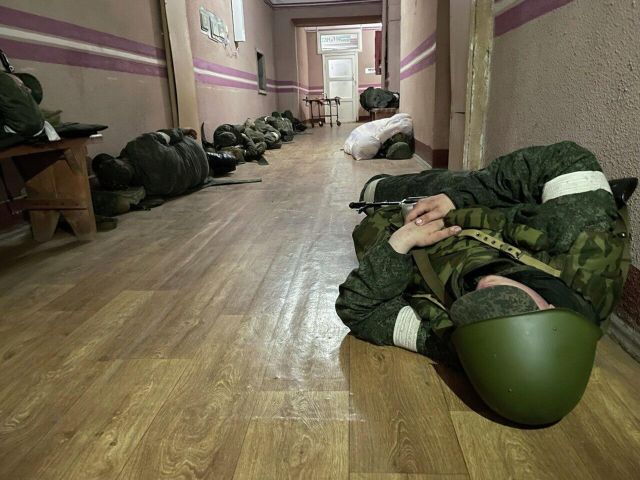
Soldiers of the 107th regiment of the DPR army on the first floor of the hospital in Novoazovsk
Image source: © RIA Novosti / Andrey Kotz
